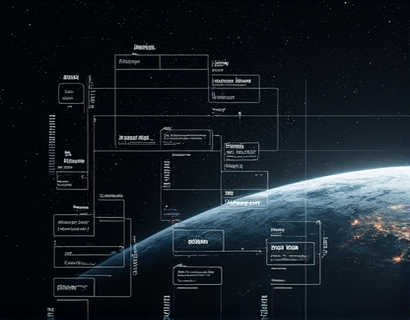Comprehensive Leadership Dashboard: Streamlining Management for Diverse Teams and Maximizing Productivity
A comprehensive leadership dashboard is an essential tool for modern business leaders and organizational managers tasked with overseeing large, diverse teams. In today's fast-paced and interconnected world, the ability to streamline management processes and enhance productivity is crucial for organizational success. This article delves into the features and benefits of an advanced leadership dashboard, designed to optimize operations and decision-making, ultimately driving business and organizational growth.
Understanding the Need for a Leadership Dashboard
Managing a diverse team presents unique challenges. Team members may be spread across different locations, work in various time zones, and possess a wide range of skills and backgrounds. Traditional management tools often fall short in addressing these complexities, leading to inefficiencies and communication breakdowns. A comprehensive leadership dashboard addresses these issues by providing a centralized platform that streamlines operations, enhances communication, and empowers informed decision-making.
Key Features of a Comprehensive Leadership Dashboard
A well-designed leadership dashboard incorporates several key features to meet the needs of modern managers:
- Real-time Data Visualization: Dashboards provide real-time insights through interactive charts and graphs, allowing managers to monitor key performance indicators (KPIs) and team metrics at a glance.
- Customizable Dashboards: Managers can tailor the dashboard to focus on the most relevant metrics and KPIs for their specific team and organizational goals.
- Collaboration Tools: Integrated communication tools facilitate seamless collaboration among team members, reducing the need for multiple platforms and improving efficiency.
- Task and Project Management: Built-in task and project management features help assign, track, and manage workloads, ensuring that projects stay on schedule and within budget.
- Reporting and Analytics: Advanced reporting tools provide deep insights into team performance, helping managers identify trends, bottlenecks, and areas for improvement.
Streamlining Operations with a Leadership Dashboard
A leadership dashboard streamlines operations by consolidating various management tasks into a single, user-friendly interface. This consolidation reduces the time and effort required to manage multiple tools and systems, allowing managers to focus on strategic decision-making rather than administrative tasks. For instance, a dashboard can integrate data from different departments, such as human resources, finance, and operations, providing a holistic view of the organization's performance.
Moreover, the dashboard can automate routine tasks, such as data collection and reporting, freeing up valuable time for managers to address more critical issues. Automation also reduces the risk of human error, ensuring that data is accurate and up-to-date.
Enhancing Communication and Collaboration
Effective communication is the backbone of any successful team. A comprehensive leadership dashboard enhances communication by providing a centralized platform where team members can share information, collaborate on projects, and receive updates in real-time. This is particularly beneficial for diverse teams, as it ensures that all members are on the same page, regardless of their location or time zone.
Integrated chat and video conferencing tools within the dashboard facilitate immediate communication, reducing delays caused by email back-and-forth. Additionally, the dashboard can support document sharing and version control, ensuring that everyone has access to the most current information and that collaboration is smooth and efficient.
Empowering Decision-Making
One of the most significant benefits of a leadership dashboard is its ability to empower managers with data-driven insights. By providing real-time data and advanced analytics, the dashboard enables managers to make informed decisions quickly. For example, a manager can use the dashboard to identify which projects are lagging behind schedule and allocate resources accordingly, or to recognize high-performing team members and reward their efforts.
Data visualization tools, such as dashboards and heat maps, help managers spot trends and patterns that might not be immediately obvious from raw data. These insights can inform strategic decisions, from resource allocation to long-term planning, ensuring that the organization stays competitive and agile.
Optimizing for Diverse Teams
Diverse teams bring a wealth of perspectives and ideas, but they also require tailored management approaches. A comprehensive leadership dashboard supports diversity by providing tools and features that cater to different working styles and preferences. For instance, the dashboard can offer multilingual support, ensuring that non-English speaking team members can fully participate and contribute.
Additionally, the dashboard can incorporate accessibility features, such as screen reader compatibility and adjustable text sizes, to accommodate team members with disabilities. By fostering an inclusive environment, the dashboard helps leverage the full potential of a diverse team, driving innovation and creativity.
Maximizing Productivity
Productivity is a key metric for any organization, and a leadership dashboard plays a crucial role in maximizing it. By streamlining operations and enhancing communication, the dashboard reduces inefficiencies and ensures that team members are focused on their core tasks. The ability to track progress and manage workloads effectively helps prevent burnout and maintains a healthy work-life balance for employees.
Furthermore, the dashboard's reporting and analytics features provide managers with the tools to identify productivity bottlenecks and implement targeted interventions. For example, if the data shows that a particular team is consistently missing deadlines, the manager can investigate the root cause and take corrective actions, such as providing additional training or adjusting project timelines.
Case Studies and Success Stories
Several organizations have successfully implemented comprehensive leadership dashboards, achieving significant improvements in management efficiency and productivity. For instance, a global technology firm reported a 30% reduction in project delays after adopting a dashboard that integrated project management and real-time communication tools. Another healthcare organization saw a 25% increase in staff satisfaction and a 20% improvement in patient care quality, attributed to the dashboard's ability to streamline workflows and enhance collaboration among diverse teams.
These success stories highlight the tangible benefits of a well-designed leadership dashboard. By providing a centralized platform for management, these tools not only improve operational efficiency but also contribute to a more positive and productive work environment.
Conclusion
In conclusion, a comprehensive leadership dashboard is an invaluable asset for modern business leaders and organizational managers. It streamlines management processes, enhances communication, and empowers data-driven decision-making, all of which are critical for optimizing operations and maximizing productivity. As organizations continue to grow and diversify, the need for such tools becomes increasingly evident. By adopting a comprehensive leadership dashboard, managers can ensure that their teams are well-equipped to meet the challenges of the future, driving sustained success and growth.










































